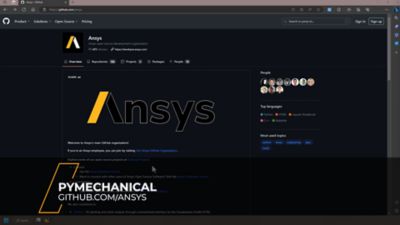Ansys Parametric Design Language, kurz APDL, ist eine leistungsstarke, strukturierte Skriptsprache, die für die Interaktion mit dem mechanischen Solver von Ansys verwendet wird. Mechanical APDL, kurz MAPDL, ist ein von APDL gesteuertes Finite-Elemente-Analyseprogramm.
Sowohl APDL als auch MAPDL können für verschiedene Aufgaben verwendet werden, von der Erstellung von Geometrien bis hin zur Einrichtung ausgefeilter Solver-Einstellungen für hochkomplexe Analysen. APDL bietet Zugriff auf erweiterte Funktionen und Funktionen von Ansys Mechanical, die möglicherweise nicht sichtbar sind oder über die grafische Benutzeroberfläche (GUI) verfügbar sind.
Mit APDL können Benutzer*innen benutzerdefinierte Eingabedateien erstellen, Materialeigenschaften definieren, Randbedingungen und Lasten anwenden, den Lösungsprozess anpassen und vieles mehr, um die Analyse an ihre spezifischen Anforderungen anzupassen.
Finden Sie mehr über Ansys Mechanical APDL heraus.
























